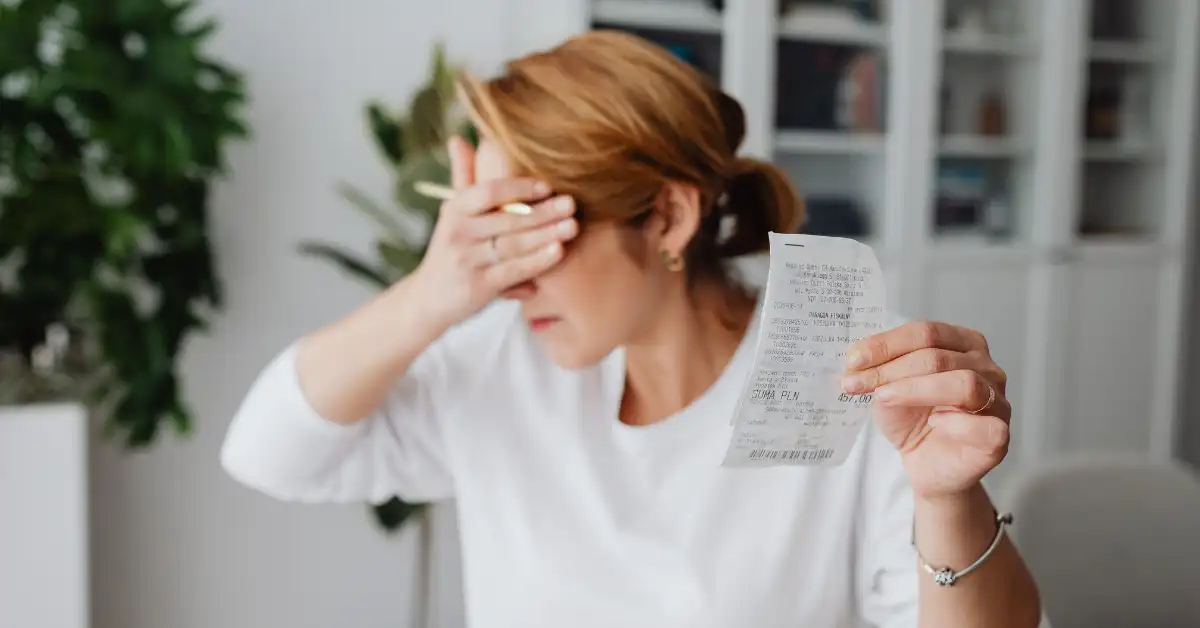

The Psychology Behind Retail Therapy

We’ve all experienced it — a bad day, a lonely evening, or a moment of stress that ends with a spontaneous purchase. For a brief moment, buying something new can feel like comfort, control, or even joy. Yet, the retail therapy relief rarely lasts. Emotional spending is a common but complex behaviour that links our mental health to our money habits. While treating yourself occasionally is harmless, using spending to soothe emotional pain can lead to financial strain and deeper distress. Understanding why we spend emotionally is the first step towards developing healthier ways to cope.
The Psychology of Emotional Spending
Emotional spending occurs when we use money to regulate mood rather than to meet real needs. Neuroscience offers clues about why this feels so compelling. When we buy something, the brain releases dopamine, a neurotransmitter associated with pleasure and reward. This short burst of feel-good chemistry can temporarily lift sadness, boredom, or stress.
However, this relief is fleeting. Once dopamine levels drop, guilt or regret often follow, creating a cycle of craving and remorse. In psychiatry, this loop resembles the reward-seeking patterns seen in other compulsive behaviours, such as binge eating or excessive screen time.
There’s other reactions at play too. In the BBC article Shopping a sale gives you the same feeling as getting high, Kit Yarrow states “During a sale, the body’s autonomic nervous system (the system that triggers the fight or flight response) reflexively takes control of certain organs, which creates a heightened response in the body, similar to the one early humans had when encountering predators.”
Emotional spending, then, is less about materialism and more about interior reflex reactions such as an attempt to regulate uncomfortable feelings. Recognising this cycle helps shift the focus from self-blame to self-understanding.
Retail Therapy or Red Flag? When Emotional Spending Becomes Harmful

A little “retail therapy” is not inherently bad. Buying yourself a treat after a tough week or celebrating a milestone can be part of normal self-care. The red flag appears when spending becomes the primary way to manage distress.
Early warning signs might include:
- Frequently shopping when feeling sad, stressed, or bored.
- Hiding purchases or feeling guilt afterwards.
- Struggling to stop even when wanting to save.
- Feeling empty or anxious without the next “fix.”
Frequent impulsive purchases, secrecy around spending, or emotional crashes after shopping may signal deeper issues such as anxiety, depression, or low self-worth.
For some, emotional spending masks loneliness or a sense of emptiness — for others, it’s an attempt to regain control during periods of chaos or uncertainty.
If spending habits start to cause financial strain, conflict in relationships, or persistent guilt, it may be time to seek professional support. Psychologists can help unpack the emotions driving the behaviour, while psychiatrists can assess whether underlying mood or impulse-control disorders play a role. Recognising emotional spending as a mental health concern rather than a moral failing opens the door to lasting change.
How Digital Culture Fuels Emotional Spending
In the digital age, emotional spending has become easier to do and harder to resist than ever. Online platforms are designed to nudge our emotions. Algorithms learn our preferences, showing us products when we’re most likely to click “buy now.” Social media compounds this effect by creating endless opportunities for comparison and emotional triggers.
Seeing influencers promote “must-have” items or friends sharing their purchases can subtly activate feelings of inadequacy or fear of missing out (FOMO). In these moments, spending becomes a quick fix to restore self-esteem or belonging. Even the tactile pleasure of online shopping — scrolling, adding to basket, awaiting delivery — reinforces the dopamine reward cycle.
From a psychological perspective, this constant exposure keeps our reward systems on high alert, leaving little room for reflection. Developing digital awareness — such as muting shopping ads, setting spending limits, or unfollowing triggering content — can be an essential act of self-care in maintaining emotional and financial wellbeing.
Can an impulse purchase end up leaving you feeling more unfulfilled than happy? This video talks about behaviour that is both impulsive and intentional, and potential benefits of emotional regulation.
How to Build Emotional Resilience Around Money
The good news is that emotional spending can be unlearned. Building emotional resilience means developing tools to soothe distress without turning to spending. Techniques from Cognitive Behavioural Therapy (CBT) can help you identify the thoughts and triggers behind purchases. Consider the following hints:
- Name the feeling before you buy.
Pause and ask, “What am I feeling right now?” Often the urge to spend fades once the underlying emotion — loneliness, boredom, anxiety — is acknowledged. - Delay the decision.
Set a short “cooling off” period before any non-essential purchase. Even ten minutes can help shift the brain from emotional to rational mode. - Track emotional triggers.
Keep a simple note of when and why spending happens. Over time, patterns emerge that can be addressed in therapy or coaching. - Replace, don’t just remove.
Find alternative ways to soothe or reward yourself — a walk, a call with a friend, journalling, or listening to music.
Mindfulness practices are equally powerful. Before buying something, pause and check in with your body: Am I tired, lonely, or stressed? Even a 60-second breathing exercise can interrupt the impulse long enough to make a conscious decision. Journalling or noting your emotional state before and after spending can also reveal patterns over time.
It’s not about never spending emotionally — it’s about choosing when to, from a place of awareness rather than avoidance.

ADHD and Emotional Spending: The Impulsivity Connection
For individuals with Attention-Deficit/Hyperactivity Disorder (ADHD), emotional spending can be particularly challenging. Research shows that impulsivity, novelty-seeking, and difficulty with delayed gratification — all common ADHD traits — can heighten vulnerability to impulsive purchases. In this context, spending is often less about emotional escape and more about the brain’s search for stimulation and reward.
Psychiatric treatment and behavioural therapy can be effective here. Medications that regulate dopamine, for instance, may help reduce impulsive urges. Therapists also work with clients to develop executive functioning strategies, such as using spending logs, waiting 24 hours before large purchases, or setting up accountability systems. By understanding the neurological roots of impulsive spending, people with ADHD can learn to manage money with compassion rather than shame.
The Mindful Money Approach: Turning Awareness into Financial Calm
True financial wellbeing begins not with restriction, but with awareness. Mindful money practices teach individuals to observe their emotional triggers and spending habits with curiosity rather than judgement. This might involve mindful budgeting — noticing not just what you spend, but why. When we become aware of the emotional drivers behind money decisions, we can make choices aligned with our values instead of our moods.
At Positive Mind Works, Financial Coach Tanya Thomson supports clients in exploring the intersection between money and mental health. Her approach focuses on developing healthier financial habits through emotional insight, mindfulness, and practical structure. By blending financial coaching with psychological understanding, Tanya helps people move from reactive spending to a sense of calm control and long-term confidence.

Emotional spending is not simply about lack of discipline — it’s a form of emotional communication. It tells us something about our needs, our stress, and the ways we try to soothe ourselves in a world that rarely slows down. Whether through therapy, mindfulness, or guidance from professionals like Tanya Thomson, healing begins when we recognise that our relationship with money is, at its heart, a relationship with ourselves.
If you would like to bring compassion and awareness to your spending habits, get in touch so we can help replace guilt with understanding and impulsivity with intention.
FAQs:
What is emotional spending?
Emotional spending happens when we buy things not because we need them, but to manage or escape uncomfortable emotions such as sadness, boredom, loneliness, or stress. It’s a form of emotional regulation — a quick way to lift our mood — but often leads to guilt or regret once the temporary relief fades.
Why do I feel better after buying something?
Shopping activates the brain’s dopamine reward system, which creates a short-lived sense of pleasure and excitement. This “dopamine hit” can momentarily reduce stress or sadness, similar to other reward-seeking behaviours. However, because the effect is brief, it often encourages repeated spending in search of that same emotional boost.
How is emotional spending different from treating myself?
Occasional “retail therapy” or buying something special as a form of self-care is perfectly healthy. The difference lies in frequency, intent, and impact. If spending becomes the main way you cope with emotions — or if it creates financial strain, guilt, or anxiety — it’s likely become emotional spending rather than healthy self-care.
What are the warning signs that emotional spending is becoming harmful?
You may notice:
- Buying things to escape stress or sadness.
- Hiding purchases or feeling guilty afterwards.
- Spending more than you can afford.
- Feeling restless or low when you try to stop.
- Using shopping as a substitute for rest, connection, or purpose.
- If these patterns sound familiar, it may be time to explore the emotional roots behind your spending.
Can therapy or coaching help with emotional spending?
Therapy can uncover the emotional patterns behind spending — such as perfectionism, loneliness, or unresolved stress — and teach healthier coping tools. Financial coaching, such as sessions with Positive Mind Works’ Tanya Thomson, can complement this by addressing the practical and emotional aspects of money. Together, this can help you rebuild confidence and control.

